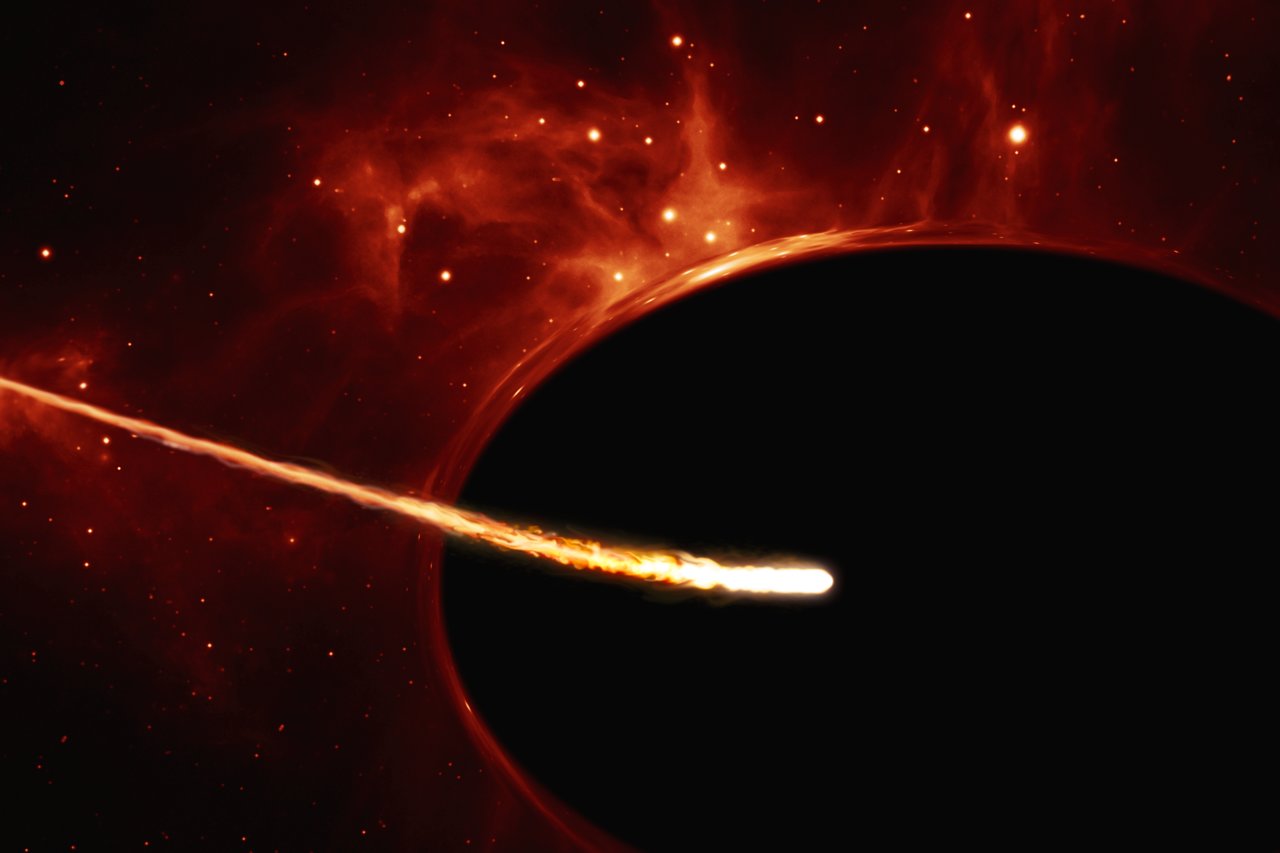
In the 1960s, astronomers began theorizing that there might be black holes in the Universe that are so massive – supermassive black holes (SMBHs) – they could power the nuclei of active galaxies (aka. quasars)!
A decade later, astronomers discovered that an SMBH existed at the center of the Milky Way (Sagitarrius A*); and by the 1990s, it became clear that most large galaxies in the Universe are likely to have one!
Since that time, astronomers have been hunting for the largest SMBH they can find, in the hopes that can see just how massive these things get.
With roughly 34 billion times the mass of our Sun, this SMBH (J2157) is the fastest-growing black hole and largest quasar observed to date.
As they indicated at the time, J2157 is the brightest quasar observed in the known Universe to date, which they attributed to the presence of an SMBH at its center.
What’s more, they were able to rule out the possibility that its luminosity was the result of gravitational lensing, where the presence of intervening galaxies and other massive objects were responsible for magnifying J2157’s brightness.
“The black hole’s mass is also about 8,000 times bigger than the black hole in the center of the Milky Way.
We’re seeing it at a time when the universe was only 1.2 billion years old, less than 10 percent of its current age.
It’s the biggest black hole that’s been weighed in this early period of the Universe.”.
But the fact that it was the fastest-growing SMBH in the Universe just 1.2 billion years after the Big Bang was nothing short of astounding.
“We knew we were onto a very massive black hole when we realized its fast growth rate.
How much black holes can swallow depends on how much mass they already have.
For some time, astronomers have been looking for more examples of SMBHs in the early Universe to see how they affected the evolution of galaxies and the cosmos as a whole.
While these questions remain unresolved, the discovery of this ancient and most-massive of supermassive black holes could provide some very helpful clues.
Already, the team behind this discovery is searching for more black holes that existed at the center of galaxies shortly after the Big Bang, in the hopes that they might find some additional clues.  !
“With such an enormous black hole, we’re also excited to see what we can learn about the galaxy in which it’s growing.
Is this galaxy one of the behemoths of the early Universe, or did the black hole just swallow up an extraordinary amount of its surroundings!